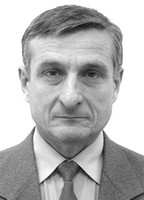Strength training methods efficiency rating experiment
Фотографии:
ˑ:
Teoriya i praktika fizicheskoy kultury №11 2017, pp.77-82
Dr.Hab. I.P. Sivokhin1
A.N. Belegov2
PhD, Professor V.F. Skotnikov3
A.I. Fedorov4
M. Tapsir5
A.P. Kalashnikov6
Master, doctoral student O.Y. Komarov7
1Kostanay State Pedagogical Institute, Kostanay
2Akhmet Baitursunov Kostanay State University, Kostanay
3Russian State University of Physical Education, Sport, Youth and Tourism (GTSOLIFK), Moscow
4South Ural State University, Chelyabinsk
5Directorate of National Teams of the Republic of Kazakhstan, Astana
6Kostanay branch of Chelyabinsk State University, Kostanay
7Kazakh Academy of Sports and Tourism, Almaty
Objective of the study was to provide experimental data to assess practical benefits of the strength training techniques with variable weights customizable to individual characteristics of the trainees. Subject to the study were 36 young people of 18-22 years of age not engaged in professional sports. The study data and findings may be applied to design efficient individualized strength training models with special emphasis on the key muscle groups employed in the test exercises.
The study data showed significant training benefits of the special strength training tools including squatting practices with weights; albeit the latter must be prudently individualised and differentiated to effectively develop the explosive strength of the relevant muscle groups with the relevant weight practice design and management procedures.
Keywords: strength training, weight, individualized training model, explosive strength.
References
- Verkhoshanskiy Y.V. Osnovy spetsialnoy fizicheskoy podgotovki sportsmenov [Fundamentals of special physical training for athletes]. Moscow: Fizkultura i sport publ., 1988, 331 p.
- Gurfinkel V.S., Levik Yu.S. Skeletnaya myshtsa: struktura i funktsiya [Skeletal muscle: structure and function]. Moscow: Nauka publ., 1985, 141 p.
- Seluyanov V.N. Podgotovka beguna na srednie distantsii [Middle distance runner training]. Moscow: SportAkademPress, 2001, 103 p. Hartman J., Tunnerman H. Sovremennaya silovaya podgotovka [Strength training today]. Berlin: Sportferlag publ., 1988, 335 p.
- Kots Y.M. Fiziologiya myshechnoy deyatelnosti. Uchebnik dlya institutov fizkultury [Physiology of muscular work. Textbook for institutes of physical culture]. Moscow: Fizkultura i sport publ., 1982, 444 p.2.
- Hakkinen, K., Komi, P.V., Tesch, P. Effect of combined concentric and eccentrik strength training and detraining on force-time, muscle fibre, and metabolic characteristic of leg excensor muscles. Scandinavian journal of Sports Sciences, 1981, 3.2, pp. 50-58.



 Журнал "THEORY AND PRACTICE
Журнал "THEORY AND PRACTICE